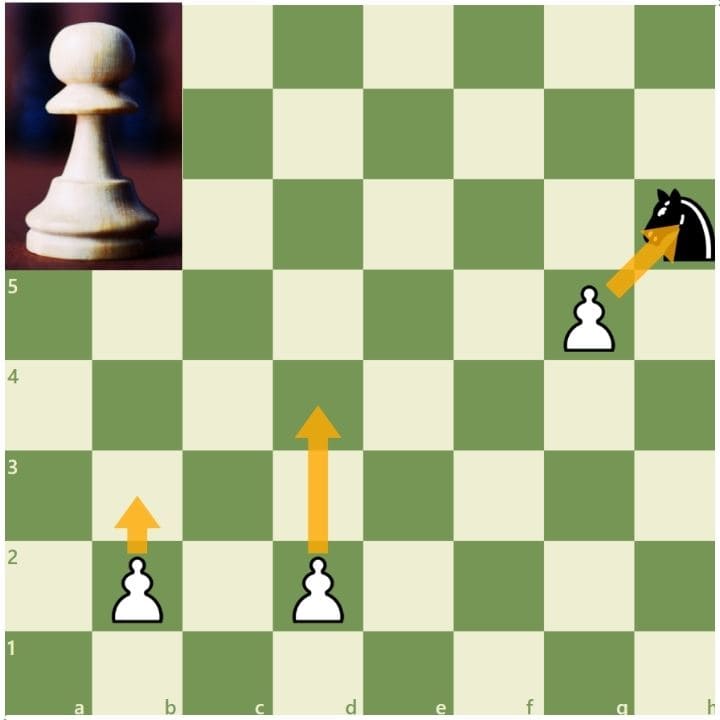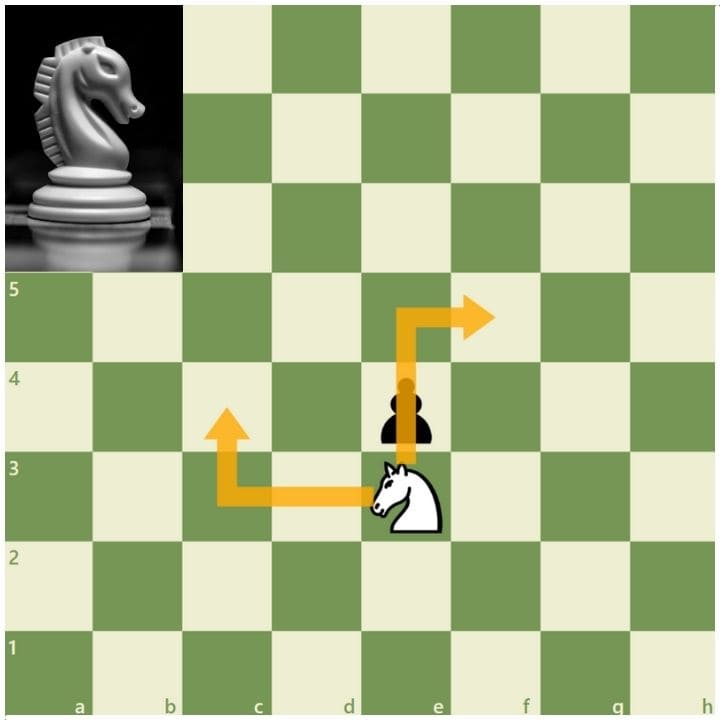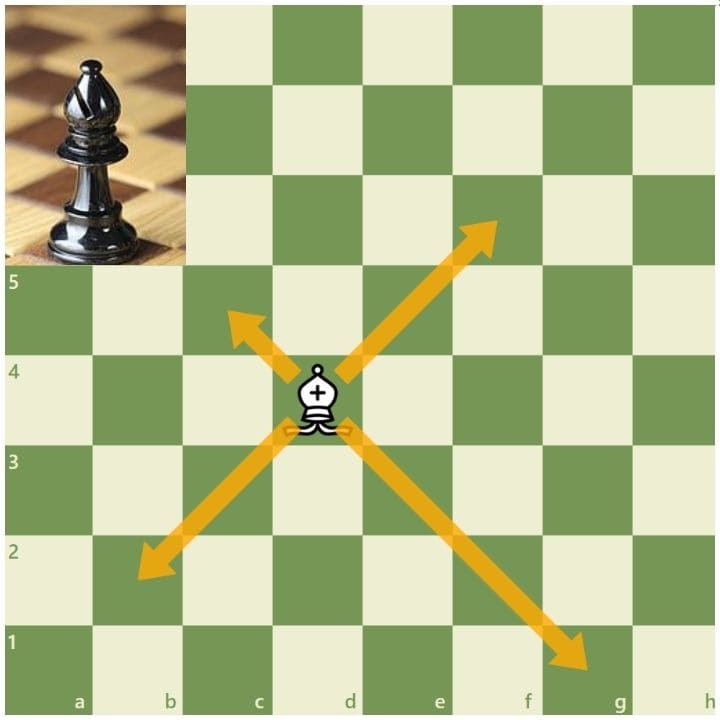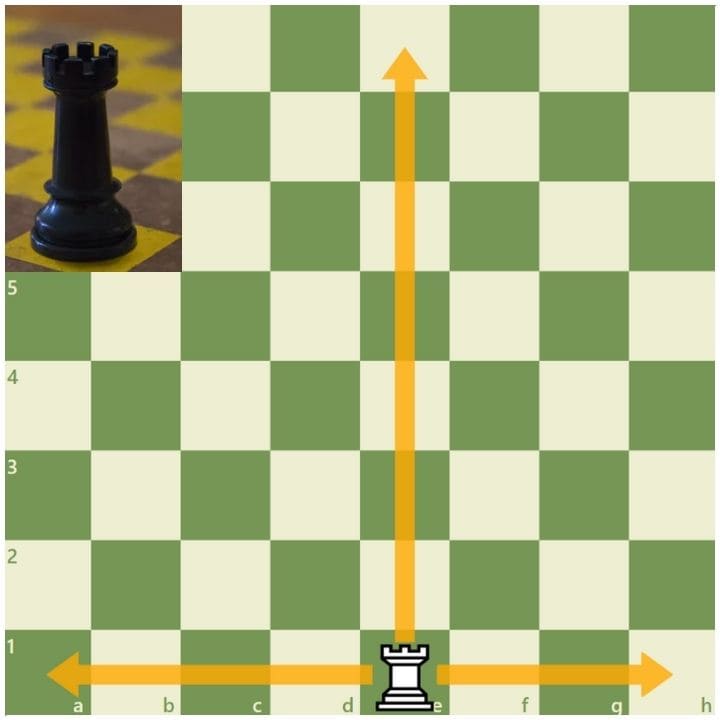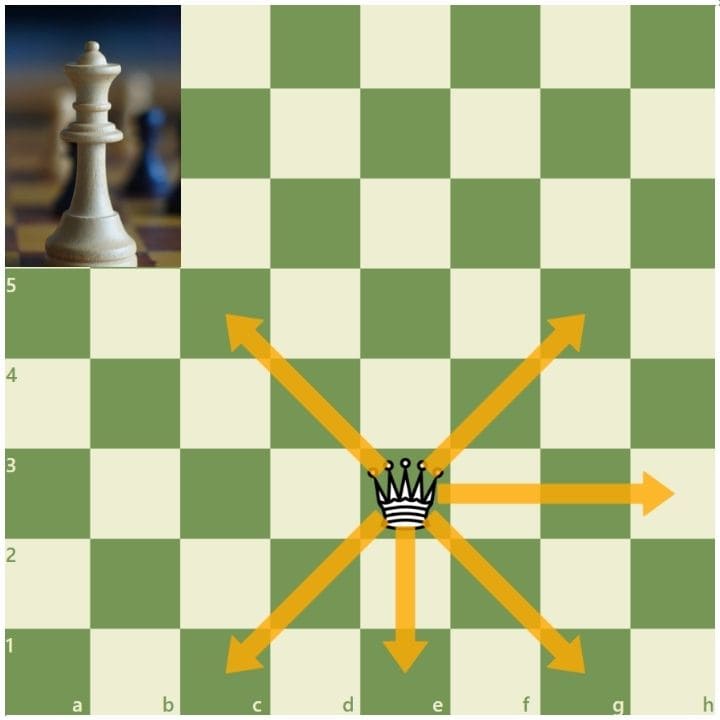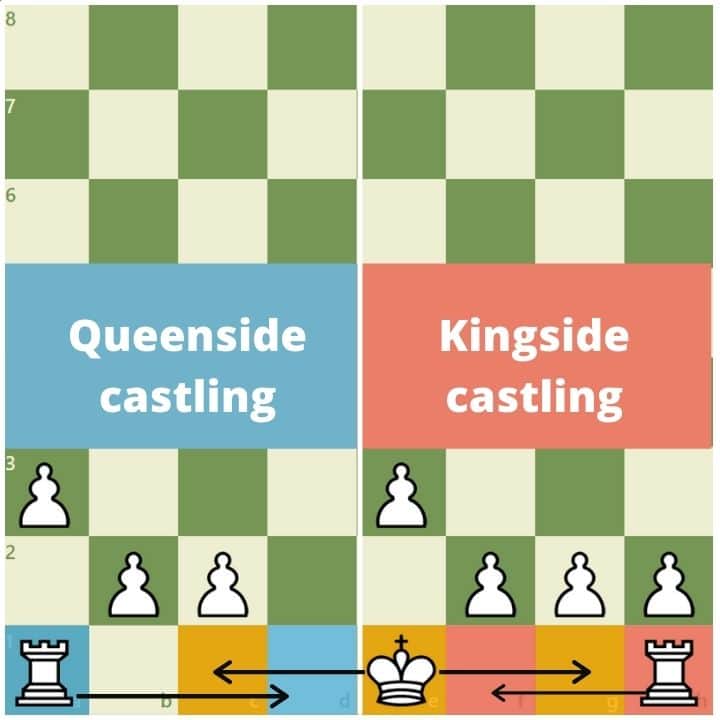With Chess Club growing a bit I wanted to write up an extremely basic beginners guide for learning the game. I have always really loved learning games and it’s one of the few things I’d say I have an above average skill at. Figured having an easy starting point could help anyone interested in joining jump into it. I’m going to go over what each piece does, general opening principles, and a couple of resources I recommend for learning.
1. How Pieces Move
If you play online you will see +/- scores indicating who has more material. It’s generally pretty accurate, but not 100%. If you have a knack for knights or can’t seem to get rooks to work, the scores next to each piece here are just a guide.
Pawns 1
At the start of each game you have 8 pawns in a row in front of all of your other pieces. As long as it hasn’t been moved yet from that original position, pawns have the choice of moving forward one space or two. They can’t capture going forward or pass anything in front of them, but this is how they setup your territory and fortify where you are wanting to go. Pawns capturing take place diagonally as show above with one taking the Knight (Horse). This is why you will see diagonal chains of them set up so if the lead goes down another can take back. One advanced maneuver they can do is called en passant. You won’t see it very often as it requires an advanced pawn in enemy territory, but if they move one of their pawns from the starting position two spaces and that is beside yours, you can go diagonally behind it both advancing and capturing them like a blind spot backstab during their advancement.
Knights 3
Knights or horses move in an L shape, two spaces one way, then turn and go one space. They can jump over pieces (which is unique to them) and creating some pretty confusing situations. They capture simply by taking whatever is where they land (enemy only, can’t move onto your own). A knight in the center can have up to 8 spaces to move to (try visualizing that grid both where it is and if you moved it), while on the sides or ends that can be limited. That’s one key to keep in mind with them as you decide where to send them. A common simple tactic with knights is trying to “fork” two pieces, this is when you move onto a space that threatens two pieces on your next move. This can be especially tricky when involving the enemy king, who won’t be close enough to take your knight but will have to move allowing you to take the other piece your knight targeted.
Bishops 3.3
Bishops are a little more straight forward, except they don’t go straight ![]() . Instead they move and capture diagonally. One next level thing to realize is because they move diagonally, your bishop starting on dark squares will stay on dark squares and vice versa for the light squared bishop. They can attack from long range like a sniper, especially if your opponent forgets where you have placed one. In recent times the chess world has started considering the Bishop (3.3) to be slightly stronger than the Knight (3), though this can depend on the situation. At advanced levels it’s often looked at as a buddy system, either two knights moving together or two bishops scoping out an extended lane together. One last tip I’ve been trying to work on is considering your pawns in relation to the bishops, if they are all on dark squares it locks out your bishop. Don’t be afraid to trade a little more aggressively knowing your pawns have one set of squares locked down (trying to keep the opposite bishop to align with them).
. Instead they move and capture diagonally. One next level thing to realize is because they move diagonally, your bishop starting on dark squares will stay on dark squares and vice versa for the light squared bishop. They can attack from long range like a sniper, especially if your opponent forgets where you have placed one. In recent times the chess world has started considering the Bishop (3.3) to be slightly stronger than the Knight (3), though this can depend on the situation. At advanced levels it’s often looked at as a buddy system, either two knights moving together or two bishops scoping out an extended lane together. One last tip I’ve been trying to work on is considering your pawns in relation to the bishops, if they are all on dark squares it locks out your bishop. Don’t be afraid to trade a little more aggressively knowing your pawns have one set of squares locked down (trying to keep the opposite bishop to align with them).
Rooks 5
Rooks (castles) are very similar to bishops, except they do go straight! They start off in the corner, but once they get going will dictate a lot of your games. Rooks can move as far as they want without jumping over anything and capture whatever they land on, but must be in a non diagonal straight line. They can also be used to help protect your king with an early game move called castling which I will go over later. Using a buddy system is generally good with them as well so that if needed you can allow one to be taken knowing you will capture back immediately with the buddy.
Queen 9
The Queen is the most powerful piece in the game, combining the strength of both the Bishop and the Rook making it even stronger since it’s one piece. Left/right, up/down, the Queen can go any which way in a line, capturing whatever it lands on. Losing her can be devastating, but when used right she can cause destruction for your opponent.
King ![]()
Early game your King is just the piece you can’t afford to lose (or you lose). He can move one space in any direction as long as it doesn’t move him into check (when a piece would be able to capture him). If he is starting the turn in check that must be resolved immediately, but when you can’t that is called checkmate and game over. Early on he is extremely weak, but as the game progresses and pieces come off the board the king will dictate the end games with more and more power. Below is the move I mentioned earlier with rooks called castling. It can only be done if both pieces have not moved yet, your king isn’t in check, and your king wouldn’t pass through a square your opponent can capture on. Either way you king two spaces over instead of one and then bring the rook in that direction across him defending his backside and also getting closer matching the rooks together.
2. Opening Principles

There are 3 general principles in the early game to focus on that can help you get started and improve your games quickly.
First you want to control the center. Whenever you get into openings you will start off mostly with either the Queen’s Pawn (D4) or the King’s pawn (E4). Moving either of those pawns forward two spaces sets you into a controlling position to focus on the 4 central squares. If you can control those you usually can control the game.
After opening with one of the central pawns you want to focus on activating your pieces. At the start of your game a lot of your pieces can’t do anything (rooks, bishops, queen, king). Focusing on getting them into the game first can give you tempo and control. After you move a pawn up one of the bishops will have a line. If you jump a knight forward it has more spaces to go to than the two it can at start. The opening phase of any game is mostly about setting up your pieces to be in the game while avoiding any mistakes along the way. In the above picture every piece is activated for white with many more moves available in only 6 moves. Looking at Black they have their bishops and one knight out and a defensive stance up in the corner.
King safety is the last thing to keep in mind and that is for the whole game. Picking which side to castle to (both are generally good unless your opponent has attacked/pressured one side already) can generally be called the end of the early game. It’s that or when you have castled and activated most of your pieces. But at a certain point even if you haven’t checked everything off you are inevitably past the opening and you will have to move forward with what you have.
3 Learning
“Welcome to the internet, have a look around. Anything that brain if yours can think of can be found. We’ve got mountains of content, some better, some worse.”
In the age of the internet chess has grown massively, wether that is from picking up the game all the way to mastering it. Many more things have been “solved” to where at the highest levels you will find a lot of instruction being “this is good, this is wrong” with little extra information. One place I have found to be a tremendous resource for Chess is honestly Youtube and specifically Gotham Chess. He has multiple series that can fit what you want from rating climbs at your ELO or ten minute openings focusing on specific opening variations. For me once you have the above mostly figured out the two places to work on most are openings and end games. You have to know how to get into a good position and how to finish it once you get to the endgame. I suggest picking one opening for both sides and focusing on that.
White the pawn in front of the king two spaces to E4 is probably the best place to start learning the game.
Good beginner white opening
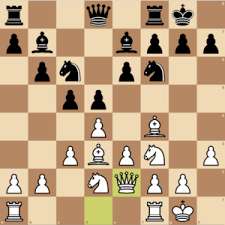
The London System looks like a lot, but after a couple moves you are there and set up. Pawn to D5 in front of the Queen, Dark Square Bishop to F4 getting it activated before your pawns close off that area, pawn to E4 both protecting the dark bishop and opening up for the light one, Light Bishop to D3. Pictured above they’ve also moved each knight once, castled, moved the end pawn up, and moved the Queen once, but it started with the London. This sets you up to have both bishops and your Queen staring at the right corner within some safety from your pawns.
Good beginner Black opening
With black going second it’s always a little more retroactive to what white is doing, but a good opening is the kings Indian defense. No idea why it’s called that, other than it’s on the kings side. You move pawn to B3, Bishop to B2, Knight to C3, and castle kings side. It nestles your king into a defensive corner that becomes very hard for the opponent to infiltrate.
Hope this helps some people interested join the cool new club we’ve made so you too can be @ed by Conq when he’s bored!
